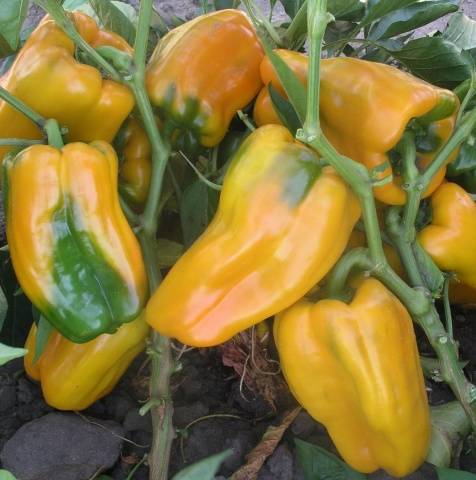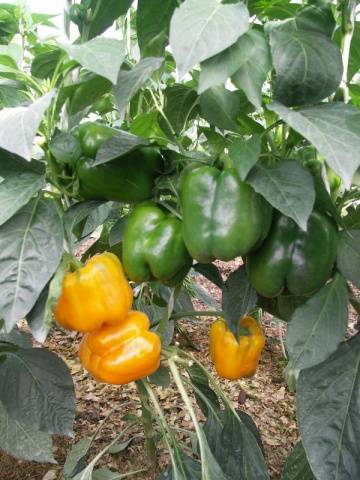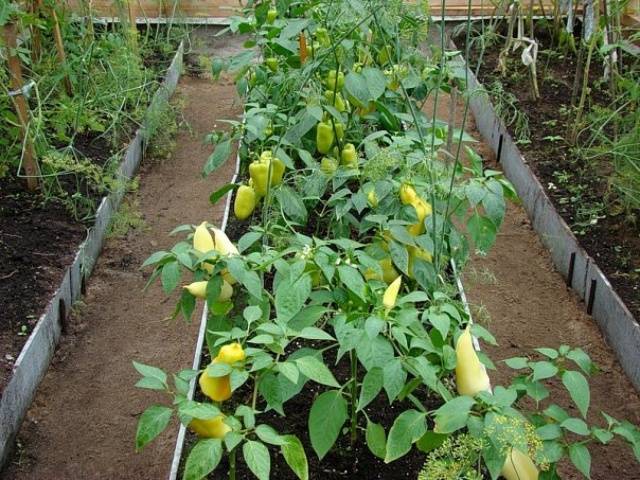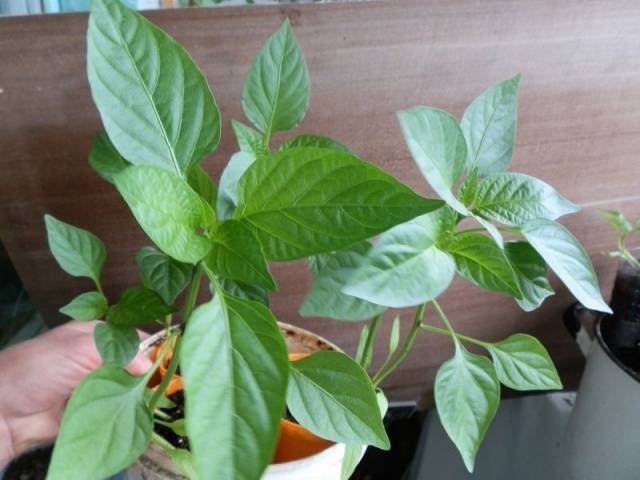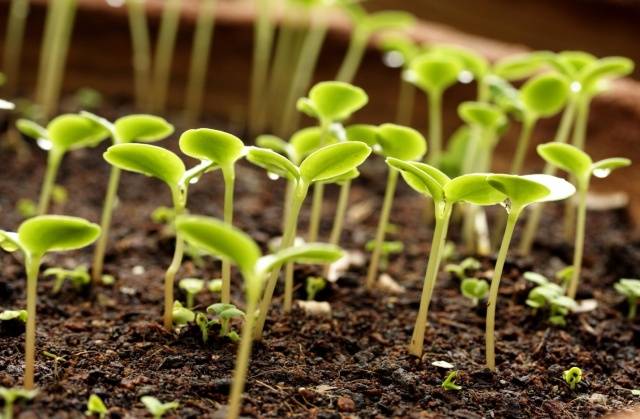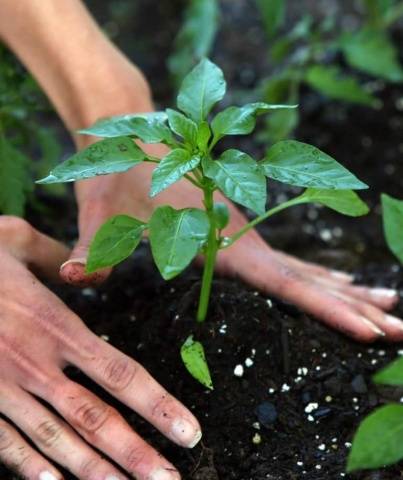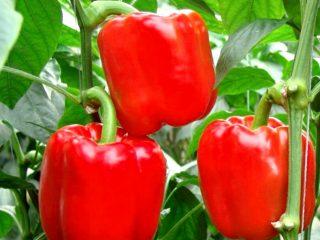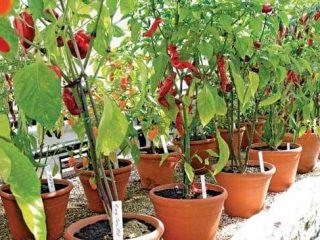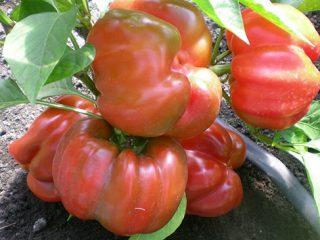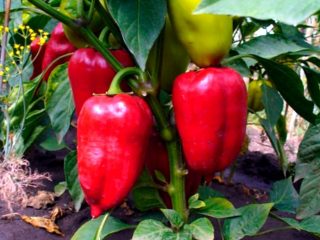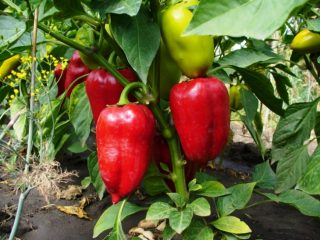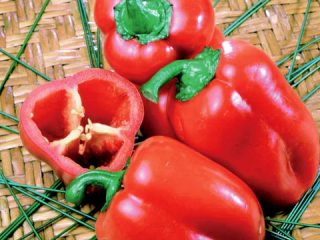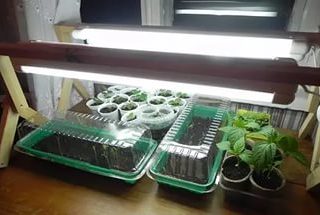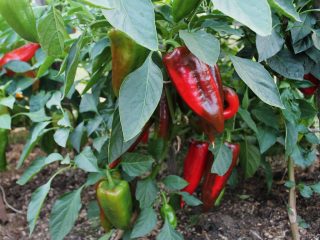Content
It is no secret that Dutch hybrids of vegetable crops are especially valued by summer residents and gardeners from all over the world. Bell peppers are no exception. For example, a hybrid called Gemini F1 is famous for its high yield, resistance to disease and unpretentiousness to weather conditions. In English, “Gemini” is translated as “twins.” This is most likely due to the appearance of ripe peppers: they are all the same shape, size and color. The Dutch variety is appreciated not only by private gardeners, but also by farmers who grow vegetables on an industrial scale.
Characteristics and description Dutch variety, photos and reviews of Gemini F1 pepper can be found in this article. Here we will talk about all the advantages of the hybrid, as well as how it needs to be grown correctly.
Features of the variety
Gemini F1 pepper is very recognizable: the fruits of this variety are colored in a rich, canary yellow hue. Gardeners love Gemini for its high yield and excellent taste; farmers appreciate the unpretentiousness of the variety and the excellent presentation of the fruit.
The Gemini pepper variety has the following characteristics:
- rapid ripening - the growing season from sowing the seeds to the technical maturity of the fruit is 75-82 days;
- average bush size: compact plant, medium leafy, spreading;
- the height of Gemini bushes is usually within 60 cm;
- the leaves on the bushes are large, wrinkled, dark green in color (a large number of leaves and their large size protect the fruits from the scorching sun);
- the shape of the peppers is cuboidal-elongated, drooping;
- About 7-10 fruits are formed on each bush;
- fruits are four-chambered, thick-walled (wall thickness, on average, is 0.8 cm);
- in a state of technical ripeness, the pepper is dark green; biological ripeness is indicated by the bright yellow color of the fruit;
- dyeing speed is average;
- the length of the fruits and their diameter are approximately equal - about 18 cm;
- the average weight of peppers depends on the growing method: on the ground - 230 grams, in a greenhouse - 330 grams;
- The taste of the Gemini F1 variety is excellent, moderately sweet with a barely noticeable bitterness - the real taste of bell pepper;
- the skin of the fruit is thin and the pulp is very tender;
- the crop is resistant to the sun, the fruits practically do not bake, and rarely get burned;
- the variety has good immunity to viral diseases, including potato virus;
- The purpose of Gemini pepper is universal - it can be planted both in open ground and in a greenhouse, greenhouse or under film;
- the purpose of the fruits is also universal: they are good fresh, in various salads, appetizers, hot dishes and canned food;
- Gemini's yield is high - about 350 centners per hectare, which is comparable to the yield standard, Gift of Moldova;
- the hybrid is unpretentious to climatic and weather conditions; it can be grown even in cold regions with cool and short summers;
- The fruits ripen together and are easy to pick, since the peppers are easily separated from the stalk;
- Gemini's presentation and keeping quality are excellent, so the hybrid is perfect for growing for sale.
Advantages and disadvantages
A description of Gemini pepper would be incomplete without mentioning the strengths and weaknesses of this hybrid. Reviews from gardeners indicate that Gemini F1 has the following advantages:
- early and simultaneous ripening of all fruits;
- beautiful appearance of peppers;
- large fruit sizes;
- excellent taste characteristics, including crispness and juiciness of the pulp;
- compact size of the bushes, allowing you to grow peppers in small greenhouses or under film covers;
- good yield indicators;
- unpretentiousness to climate;
- resistance to viral diseases;
- universal purpose of fruits.
Much to the chagrin of gardeners, the ideal pepper does not yet exist in nature. Gemini, like all other varieties and hybrids, has its disadvantages:
- slow coloring of fruits - which leads to the loss of a certain percentage of peppers;
- the hybrid’s strong dependence on fertilizing - with a lack of fertilizers, the walls of the pepper become much thinner;
- Gemini shoots are quite fragile, so the bushes often break off under the weight of large fruits - they need to be tied up;
- The color of the fruit is often uneven, which affects their marketability.
Growing rules
Growing a Dutch hybrid is not difficult, because it is very unpretentious and resistant to external factors. The gardener must remember the hybrid origin of Gemini: the seeds of this pepper do not retain complete information about the genes - the fruits will mutate, change color, size or shape. Therefore, planting material will have to be purchased annually.
Landing
In the southern regions, Gemini F1 seeds begin to be sown in the second half of February. In colder regions, the vegetable is sown for seedlings a little later - in the first ten days of March. If you need early seedlings for a heated greenhouse or greenhouse, you need to sow peppers already in January.
It is better to sow the seeds in 200 ml plastic cups or in special peat tablets, so that later the seedlings do not have to be planted - pepper does not tolerate this procedure well.
Gemini sweet pepper loves warmth and light. For the first 12-14 days, containers with seeds should be kept at a temperature of 24-27 degrees. During this time, the first shoots will appear, then the pepper seedlings can be removed to a cooler but brighter place.
When the pepper is 40-50 days old, it is planted in a permanent place. Depending on where Gemini will be grown, the recommended planting dates also change: seedlings are transferred to the greenhouse in mid-May, and sweet peppers can be planted in open ground no earlier than the first days of June.
The height of pepper seedlings at the time of transplantation should be 16-17 cm, each bush should already have 5-6 true leaves. The presence of flower ovaries is acceptable. But it is not recommended to overexpose bell pepper seedlings. At 65-70 days of age, Gemini is planted only in heated greenhouses; this is done in mid-spring.
Planting Gemini pepper in a permanent place is carried out according to the following rules:
- Choose a site on level ground or on a slight hill.
- It’s good if there is protection from strong winds and drafts.
- Soils are preferred nutritious, loose, carbonate.
- The best precursors for bell peppers are cabbage, legumes and grains.
- The planting scheme for small volumes is three bushes per square meter.
- Gemini shows the best yield with this scheme - 50x40 cm.
- The soil on the site or in the greenhouse should warm up to at least +15 degrees.
- It is recommended to fill the planting holes with a nutritious soil mixture mixed with organic matter or mineral fertilizers.
- Immediately after planting, pepper seedlings are watered and the soil around the root collar is mulched. Mulch will protect the roots from overheating and hypothermia and help retain moisture.
Care
The yield of Gemini pepper declared by the originator of the variety can vary greatly in practice. This indicator largely depends on the nutritional value of the soil, the quantity and quality of fertilizing. Bell peppers will not grow on their own; this crop needs care.
Here's how to care for Gemini F1:
- Cover the soil with mulch or constantly loosen, remove weeds, monitor moisture.
- Use a drip irrigation system or water the bushes by hand, avoiding cracking the soil and exposing the roots.
- Pick off the first “royal” buds.
- Form pepper seedlings into one or two stems, removing excess shoots.
- In greenhouses, it is better to cut off the central ovaries to prevent the fruits from becoming smaller.
- Tie up the bushes when the fruit begins to swell and increase in size.
- If necessary, normalize the number of fruits, leaving no more than ten pieces on each plant.
- It is imperative to feed Gemini peppers. In the fall, the soil is filled with organic matter, and in the summer this hybrid is fed only with mineral fertilizers. There should be at least three feedings: the first time a week after planting, the second - in the flowering phase, the third feeding is carried out when the fruits begin to change color.
Review
Conclusion
Reviews from gardeners and farmers about Gemini pepper are contradictory. Most farmers note the large-fruited sweet vegetable and its good taste. The variety is valued for its unpretentiousness and resistance to viral diseases, but requires good care and frequent fertilizing with mineral components.
With proper care, the hybrid will delight you with high yields and uniform coloring of the fruits. Gemini's product quality is top notch!

